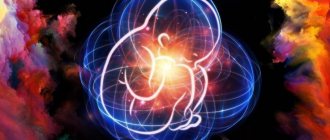Find out more about diseases starting with the letter “G”: Ganglioneuritis, Ganglioneuroblastoma, Ganglionitis of the pterygopalatine node, Soft tissue hematoma, Hematomyelia, Hemiballism Ganglioneuroma, Hemangioblastoma, Hemifacial spasm, Generalized epilepsy, Germinoma of the brain, Hydrocephalus, Hyperventilation syndrome, Hyperkinesis, Hypersomnia, Hy hypertensive cerebral crisis , Hypertensive encephalopathy, Hypnic headache, Brain glioma
Description and reasons for development
Hyperventilation syndrome (HVS) has a mental and neurological nature, affecting the development of an abnormal breathing rhythm, which leads to excessive ventilation of the lungs. The disease occurs against the background of vegetative, mental, respiratory disorders, as well as failures of muscle tone. The phenomenon was first described in medical literature in the 70s of the 19th century by the American doctor Da Costa. You can find other names for the disease in reference books, but the original term has firmly taken root in medical practice.
The main factor in the development of hot water supply is improper breathing formed over a long period of time. The following categories of people are susceptible to anomalies: people involved in dynamic sports, playing wind instruments, those who have experienced a long-term state of stress, who have observed the process of suffocation of other people (drowning, suffocating during an asthmatic attack, etc.). In addition, physiological deviations that affect the formation of the respiratory rhythm also play an important role. All possible causes of the phenomenon are divided into three groups:
- Psychogenic. This group accounts for more than half of all morbidity cases. Against the background of experienced anxiety, depressive periods, panic attacks, neurasthenia, hysteria, there is a high probability of developing hyperventilation syndrome. If during childhood the patient witnessed another person suffocating, an emotional transfer of this situation to oneself may occur.
- Organic. This group includes factors of a physiological nature: dysfunction of the central nervous system, malfunctions of internal organs, hypertension, systematic bronchitis, diabetes. The incidence of HVS development against the background of anatomical lesions is about 5% of the total.
- Mixed. The group includes 35% of the sick. It is characterized by the fact that the catalyst for the occurrence of the disorder is a psychological factor in the presence of an existing physiological pathology. In addition, there are cases when the syndrome was formed as a result of long-term use of certain types of medications with a hormonal composition.
Unlike many other internal systems, a person can partially control the respiratory function - hold his breath, take a deep breath, increase and decrease the frequency of inhalations and exhalations. Therefore, the emotional and mental status of the patient directly affects the respiratory rhythm. During anxiety and stress, the biochemical balance in the body changes, the long-term disruption of which affects the metabolism of calcium and magnesium. Respiratory enzymes are produced in different quantities, which provokes increased ventilation of the lungs. Not only does an increased amount of oxygen enter the blood, but carbon dioxide is also intensively removed from it. This leads to a change in the acid-base balance of the blood solution to the alkaline side. The next stage is a change in consciousness, disturbance of autonomic functions, increased anxiety and fear. And increased anxiety again provokes respiratory dysfunction. It becomes difficult for a person to “break out” of this status on his own, even if the initial provoking factor has already exhausted itself.
Prevention
In order to prevent the situation from worsening in the presence of VSD, it is necessary to observe a number of simple conditions for a healthy life. The number one tip is balanced physical activity.
A sedentary lifestyle, cardiac problems and a poorly developed respiratory system are fertile ground for dystonia. To train the body we recommend:
- physiotherapy;
- fitness (but not active cardio exercises);
- yoga;
- swimming and various water procedures;
- breathing exercises;
- walking in the fresh air;
- control over emotional state.
In order to prevent the occurrence of neurological shortness of breath due to psychological problems, the body should be given a break from mental stress. If a person devotes most of his time to office work, it is recommended to spend leisure hours paying attention to the body, and not to the screen of the phone, TV and computer.
Sometimes taking sedatives helps in the fight against neurosis, also having a beneficial effect on the functioning of the cardiovascular system and respiratory organs.
Every night 7-8 hours of healthy sleep in a clearly established mode, relaxation sessions and selected therapy, a positive psychological attitude towards conscious healthy life - all this helps to establish harmonious functioning of the body.
Signs of pathology
The symptoms of the pathology are multifaceted and can manifest differently in each individual case. But in almost all patients, three main signs are recorded: an increase in the frequency of respiration, emotional distress and a change in muscle tone.
Respiratory dysfunction is manifested by symptoms such as:
feeling of lack of air;- spasm in the throat, a feeling of difficulty in the flow of air into the respiratory tract;
- violation of the automaticity of movements when inhaling, “stopping” breathing, forcing the patient to make controlling efforts;
- constant desire to yawn, cough, take a deep breath, snoring in sleep and while awake.
The phenomenon of hot water supply against a background of alarm causes the following complaints:
- chronic nervous tension;
- causeless anxiety;
- the person loses the ability to relax;
- a feeling of fear when being in an open space with a large number of people around.
An increase in muscle tone is associated with a change in the chemical composition of the blood solution, which affects increased nervous excitability. The patient complains of constant tingling in the limbs, numbness, loss of sensitivity, spasms of certain parts of the body, and convulsions. Accompanying general symptoms are systematic headaches, pain in the abdominal area, increased gas formation, unstable stools, tension in the heart area, rapid heartbeat, and clouding of consciousness.
In acute cases, attacks occur - crises, when a person thinks that he is about to suffocate. The condition is similar to a panic attack. At this moment, the patient is convinced that he is in a place where no one can provide him with medical care. Nausea, dizziness, heart pounding in the head, fear of death, suffocation, hot flashes or, conversely, cold, nagging pain in the heart appear. With the described status, respiration into a plastic or paper bag helps well. The patient inhales the air that he himself exhaled before. It contains an increased concentration of carbon dioxide, which relieves imbalances in the blood and reduces symptoms to nothing.
Symptoms of hyperventilation
The main symptom of hyperventilation is a feeling of lack of air, which makes you want to breathe even more often and deeper. Breathing may be accompanied by bronchial whistling or even coughing. Other, less obvious symptoms of hyperventilation include:
- dizziness;
- decreased visual acuity;
- hearing loss;
- spots or darkening in the eyes;
- arrhythmia;
- increased heart rate;
- pale appearance;
- numbness of fingertips;
- hypertonicity of the muscles - the fingers on the hands are extended and it is impossible to bend them independently;
- convulsions;
- nausea and even vomiting;
If hyperventilation is caused by a panic attack, the person is subjected to severe fright, and thoughts of sudden death begin to occur to him, which further aggravates the situation.
How is the disease diagnosed?
Respiratory ailments and a large number of symptoms often lead specialists to assume the presence of organic disorders of the pulmonary and cardiovascular systems. Initially, an examination is carried out by a therapist, cardiologist and pulmonologist. Examination measures do not reveal serious physiological disorders. In this case, the therapist pays increased attention to the emotionality and general mental state of the patient and redirects him to a neurologist.
The specialist carefully collects a psychogenic history, asks about experienced traumatic situations, fears originating in childhood, neuroses, and depressive states. Next, a neurological examination and electromyography are performed, which makes it possible to detect increased excitability of nerve and muscle fibers.
Of great importance is a subsequent examination by a psychologist, who will not only determine the personality structure, but will also conduct testing using a special questionnaire compiled by Dutch scientists. This survey reveals the presence of the syndrome in 90% of cases. A hyperventilation test is performed: the patient is asked to breathe deeply for a while. If deep breaths lead to autonomic changes and emotional anxiety, this indicates a positive test result.
A laboratory study of the composition of the blood is carried out, a drop in the pressure of carbon dioxide in the composition is detected, as well as a decrease in the amount of calcium and magnesium elements. At the same time, internal organs are examined using instrumental methods. This is necessary to exclude or identify physiological pathologies leading to HVS.
Diagnostics of GVL
Hyperventilation of the lungs is not only a set of unpleasant symptoms, but a serious health disorder. Therefore, if any respiratory disorders occur, you need to start with a correct diagnosis.
Initial diagnostic stages:
- survey: the patient names complaints, supposed causes, duration of attacks, methods of relieving the syndrome;
- taking an anamnesis: history of the development of GVL, the presence of allergies, professional history, concomitant pathologies, attitude towards smoking, effective therapy;
- examination, anthropometry (height, weight, body mass index).
For screening diagnosis of hyperventilation, the Nymigen questionnaire is used. This questionnaire contains 16 questions that need to be answered using a five-point scale:
- 0 points – no symptoms;
- 1 point – rare symptoms, once a month or even less often;
- 2 points – attacks several times a month;
- 3 points – one or more symptoms per week;
- 4 points – very frequent manifestation, from one to several times a day.
- Chest pain. 2. Feeling of internal tension. 3. Clouding of consciousness. 4. Dizziness.
- Confusion in the environment. 6. Fast and deep breathing. 7.Short (shallow) breathing. 8. Feeling of pressure in the chest 9. Feeling of a bloated abdomen. 10. Trembling fingers.
- Inability to take a deep breath. 12. Tension of the muscles of the fingers. 13. Stiffness (spasm) of the muscles around the mouth. 14. Cold hands and feet. 15. Heartbeat. 16. Feeling of fear.
Interpretation of results: If the patient scores more than 23 points, then the likelihood of hyperventilation syndrome is high
. In this case, consultations with a psychologist, psychotherapist, or neurologist are necessary. If the number of points is lower, you need to undergo an additional examination to find out what pathology gives rise to the symptoms that bother the patient.
If hyperventilation is suspected, the following examination methods are prescribed:
- Capnography is the determination of the percentage of carbon dioxide exhaled by the patient.
- Blood test - the ratio of oxygen and carbon dioxide to the norm.
- Spirometry - shows the vital capacity of the lungs, the passage of air through the respiratory system.
- Ultrasound examination of the thyroid gland.
- Cardiogram.
- Tomography, MRI of the brain.
- Encephalogram.
These and other additional studies are necessary in order to differentiate GVL from myocardial infarction, epilepsy, and bronchial asthma.
How to deal with hyperventilation syndrome?
Restorative manipulations include both drug therapy and psycho-emotional correction. It is important to explain to a person that his disease is not associated with organic damage, that it is formed against the background of mental imbalance and unreasonable anxiety. The basis of treatment is work with a psychologist who conducts a course of psychoanalysis of children's fears and stressful moments experienced. The patient must be taught respiratory exercises and convinced to carry out exercises regularly. An additional technique is learning ways to relax the body. An acute crisis is relieved using a package. An instrumental method of controlling the frequency and depth of respiration is biofeedback therapy. By receiving data from special equipment, they help the patient learn to correct movements when inhaling and exhaling.
Drug treatment includes a course of antidepressants, mild sedatives and neuroleptics, vegetotropes. To normalize blood composition, medications with a high content of calcium and magnesium are prescribed, which reduce the body’s need to breathe deeply and have a calming effect, reducing muscle and nervous excitability. Recovery takes a long period - about six months. When a positive effect is achieved, the person continues to be periodically observed by a specialist - a neurologist.
Prognosis of the course of the disease and preventive measures
DHW does not pose a significant threat to life, but it greatly reduces its quality. If you do not seek professional help in time, the symptoms progress, the person loses the ability for subsequent social activity, and nervous disorder and fears worsen. The effectiveness of treatment is high, the patient has every chance of a full recovery. It is important to systematically develop a positive outlook on life and change your attitude towards stressful situations. This will avoid relapse of the pathology in the future. If necessary, it is important to promptly seek psychological help.







